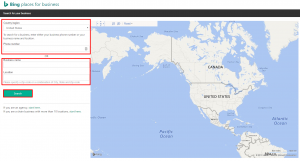We’ve hit the fourth installment in my series about buzzwords (last month’s was all about big data, and boy, was it a doozy).
So, what is this all about? Every month, I break down marketing jargon from the most inner circles and serve you the meaning and value behind the phrase.
This month, I’m taking on a word you probably think you already– “influencer” – but you might be surprised to learn there’s more to it than you thought.
What is an influencer?
These days, everybody wants to play in the influencer game. They want to be an influencer, reach out to an influencer or just get on an influencer’s radar.
Cool Brands defines influencers as “well-connected people regarded as … in-the-know; someone who is looked to for advice, direction, knowledge and opinions.”
But if you really want to understand what influencers are, you need to understand what they’re not.
An influencer is not just …
- A celebrity.
- Someone with a prominent title or powerful position.
- A person with a bunch of social media followers.
The scope of influencers reaches beyond that.
For example, it’s possible for an influencer to have a small social following, while still holding considerable sway over her followers or industry. In fact, the hallmark of a true influencer is simply someone who can influence people to take action, whether it’s a group of 50 or 50,000.
This leads me to my favorite definition of “influencer,” mainly because of its simple yet inclusive phrasing: “An influencer is any third party that significantly shapes the customers’ purchasing decision.” (Brown & Hayes, 2008)
Why are influencers important to your brand?
Let me put it bluntly: The goal of all marketing is to influence your audience, whether you want them to buy or simply engage. Influencers have the ability to reach the very people you’re targeting and impact their decision-making and perceptions.
This makes influencers very powerful. Not only can they give your social exposure a boost – they can drive people to your site, lend a credible testimonial to your story and even act as affiliates who sell your product directly.
In a world that increasingly tunes out outbound advertising, this type of organic inbound marketing (organic looking, anyway) can be invaluable.
When you consider that consumers trust third-party endorsements and recommendations more than advertising, you can see how influencers become a recipe for some serious sales.
Social@Ogilvy summarizes your options for tapping into influencers through your marketing:
- Marketing to influencers: Influencing the influencer is a difficult game, but it’s one that’s incredibly valuable to win.
The goal here is to expose influencers to your product, service or content. This might mean giving them steep discounts or creating unconventional benefits that capture their limited attention. After all, influencers tend to be busy people. They see a lot of pitches, so make sure yours is special.
- Marketing through influencers: In this case, you’re using the power of an influencer to increase awareness for your brand among your target market, without necessarily tapping into his audience.
- Marketing with influencers: In this situation, you turn the influencer into an advocate and a partner in your efforts to reach your audience.
What are some common mistakes in influencer marketing?
If you’re trying to reach influencers, here’s what to avoid at all costs:
1. Rushing it.
When influencer marketing pitches fail, it’s often because brands attempted to force their way into an influencer’s circles. That simply doesn’t work because influencer marketing is a relationship-based marketing approach, and authentic relationships take time and energy to cultivate.
If you come into a relationship swingin’, many influencers will be turned off and just ignore you.
2. Forgetting that some influencers are homegrown.
Many brands squander a golden (and free) influencer opportunity: empowering their own internal teams to become influencers. Cultivate in-house influencers by giving employees the space to engage socially, publish content and establish their own reputations.
3. Forcing it.
The truth is, you can’t force an influencer to care about you or your product; you need to build that sort of faith naturally. Trying to blunt-force your way onto an influencer’s radar through invasive outreach, social spam or under-the-table deals can backfire in a big way if the message he takes to his audience is a negative one.
4. Choosing the wrong influencers.
Just because George Clooney and Gary Vaynerchuk have massive followings doesn’t mean they’re the right influencers for your new software campaign.
The influencers you should target strongly depend on the audience you’re trying to reach. For example, if your goal is to get published in a major industry hub, the editor of that hub should be a primary influencer that you target.
And while you might be tempted to go for the big fish (influencers with the biggest reach and strongest followings), remember that there are small subgroups and small audiences that may convert very well if you tap into them.
5. Wingin’ it.
A few tweets or outreach emails won’t cut it. As outlined by Britt Michaelian, you must build a system that bases your influencer campaigns on your desired results. In other words, if you have an influencer on board, work with her to create an editorial calendar, outline responsibilities, define your KPIs and set tracking measures in motion. You also need a plan for the relationship both during and after the influencer marketing campaign.
How can I start influencer marketing?
It doesn’t need to be a complex system, but you do need a plan. Take a look at Traackr’s five-step process:
1. Define your online audience first. Research who they are, what they care about and who impacts how they discover, evaluate, decide and buy.
2. Discover the right influencers (this means considering context!). Look for people who produce (and share) content that can impact your business or buyer’s journey. Look for individuals in positions of power (rather than a group) with the authority to effect change.
3. Monitor influencers for opportunities. Listen to influencers, pinpoint the topics they find most compelling and watch what they enjoy talking about. Keep tabs on what they write about and share, and take notes on what their audiences ask.
4. Take action and engage. When the moment presents itself, open up a conversation and begin a dialogue with the influencer. Be patient and persistent; talk to him like a human being instead of some sort of marketing asset. Follow, share, link and discuss with him, all with the goal of building trust. Then, when the time is right, present him with an opportunity to work with you.
5. Measure your results. Monitor and track the relationships you are building and watch how they translate into tangible outcomes. Whether you’re targeting visitors, introductions, mentions, leads or sales, keep learning and iterating.
Spread your influence!
As you have discovered, “influencer” is a broad term, and it’s a bit more complicated than you would expect. But if you engage them carefully and deliberately, influencers can be a huge benefit to your business. Believe me, it’s worth the effort!
(169)






